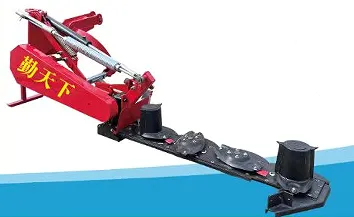Exploring the Features and Benefits of Self-Propelled Reapers for Modern Farming Solutions
The Evolution and Benefits of Reaper Self-Propelled Technology
Self-propelled machines have revolutionized various industries, particularly in agriculture, where they have significantly enhanced efficiency and productivity. Among these innovations, the self-propelled reaper stands out as an essential tool for modern farming practices. This article will explore the evolution of self-propelled reapers, their benefits, and their impact on agricultural productivity.
The history of the reaper dates back to the early 19th century when manual harvesting methods were predominantly used. The invention of the mechanical reaper by Cyrus McCormick in 1831 marked a turning point in agricultural technology. However, early models required horses or oxen to pull them, limiting their speed and efficiency. The advent of the self-propelled reaper in the latter half of the 20th century transformed this landscape. By integrating an engine and advanced steering systems, self-propelled reapers could navigate fields independently, enhancing their versatility and effectiveness.
The Evolution and Benefits of Reaper Self-Propelled Technology
Moreover, self-propelled reapers are designed with advanced cutting technologies, ensuring a clean cut that minimizes damage to plants. This precision in harvesting allows farmers to maintain the quality of their crops, leading to better yields and profitability. Modern self-propelled reapers are equipped with features such as adjustable cutting heights and efficient grain collection systems, further optimizing harvesting processes.
reaper self propelled

Another critical advantage of self-propelled reapers is their adaptability to various terrains and conditions. Traditional machinery often struggled in uneven or challenging landscapes, leading to inefficiencies and potential damage to crops. Self-propelled reapers are engineered to handle diverse agricultural environments, from flat fields to hilly terrains. This adaptability not only enhances their utility but also allows farmers to maximize their land usage effectively.
In addition to their operational benefits, self-propelled reapers contribute to sustainable farming practices. With growing concerns about environmental impact and labor shortages, efficient machinery plays a crucial role in modern agriculture. By reducing the need for extensive labor and optimizing fuel consumption, self-propelled reapers can lower the overall carbon footprint of farming operations. Furthermore, their ability to harvest crops quickly and efficiently reduces the risk of spoilage, leading to less food waste.
As technology continues to advance, the future of self-propelled reapers looks promising. Innovations such as automation and data analytics are on the horizon, allowing for even smarter and more efficient harvesting solutions. Drones and GPS technology are beginning to be integrated into harvesting operations, enabling farmers to monitor their fields in real time and make informed decisions about when and how to harvest.
In conclusion, self-propelled reapers represent a significant advancement in agricultural technology, providing numerous benefits to farmers and the sustainability of farming practices. Their efficiency, precision, and adaptability are transforming the agricultural landscape, allowing for increased productivity and better crop management. As we look to the future, the continued evolution of self-propelled technology promises to shape the agriculture industry, making it more efficient and environmentally friendly. The self-propelled reaper is not just a tool; it is a testament to human ingenuity and the pursuit of progress in agriculture.
Latest news
-
When to Upgrade Your Old Forage HarvesterNewsJun.05,2025
-
One Forage Harvester for All Your NeedsNewsJun.05,2025
-
Mastering the Grass Reaper MachineNewsJun.05,2025
-
How Small Farms Make Full Use of Wheat ReaperNewsJun.05,2025
-
Harvesting Wheat the Easy Way: Use a Mini Tractor ReaperNewsJun.05,2025
-
Growing Demand for the Mini Tractor Reaper in AsiaNewsJun.05,2025
